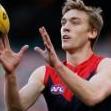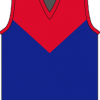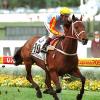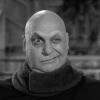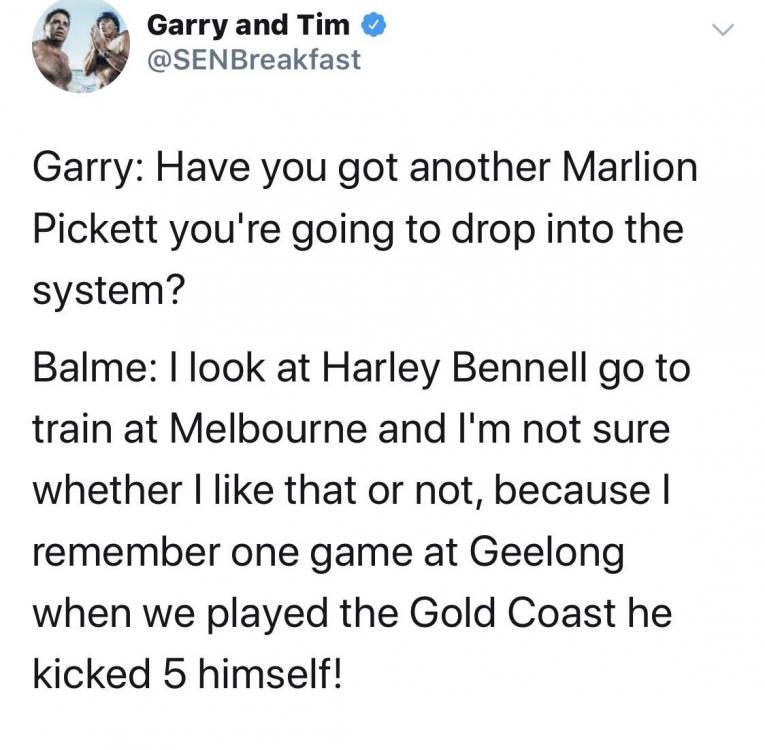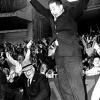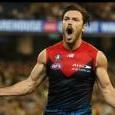Leaderboard
Popular Content
Showing content with the highest reputation on 09/11/19 in all areas
-
Maybe next time you have no idea what’s happening behind the curtains, you might consider that before criticising?21 points
-
You mean the 2 players that paid for their own personal training camp o/s during the break? ....and the number 2 pick who was spotted training for a couple of hours early on a Saturday morning looking in peak condition with his own personal trainer before the kids took over the ground for cricket? They're both working hard... For some it's better they stay away from the club, do the work & come back refreshed. They're all going to be in each others pockets soon enough.20 points
-
15 points
-
If you're talking about Salem and Petracca I think you're being extremely harsh. Both boys self funded a high rigorous training camp in the US with exposure to professional NFL clubs and world class gym facilities. They did this on the back of Josh Dunkley and Marcus Bontempelli last year doing the exact same thing and Dunkley especially being on record this year to benefiting him for his break out year. If they are not oblige as you say to be there, but are going the extra mile in terms of training preparation and also training with world class athletes then what's the issue? I swear some people want to find an excuse to sink the boots at any cost. Players can't win these days.14 points
-
13 points
-
So you'd kept up with social media enough to know they were overseas, but not enough to know what they were doing overseas? You've copped it from a few, but FWIW I don't agree at all with your attitude towards players not being back at training early. There are a whole host of other issues that go beyond setting examples or getting the best out of themselves. Whether it's mental health, family, other fitness issues, perception from within the club. A whole host of things you, and the rest of us, have no idea about. There's only a couple of months a year where the players aren't obligated to be within the AFL/MFC bubble. I love that Gawn and Harmes and TMac and others have come back early, but just because it works for them doesn't mean it should work for everyone.9 points
-
Should have said nothing than, based on that. All you've done is assumed with no idea at all Par for course by so many who just like to see the negative in our players To nice DD, I'm over Deelanders continually potting the club and players7 points
-
Thanks for the vote of confidence. I expect you are a professional in this field and have done an in depth analysis of the club's culture and that you have determined your conclusion on proper material and an extensive examination of all the aspects that make up a club's culture. It would on the other hand be disappointing, if your comment is just another BS throw away line, made just to denigrate the club and its personnel. That wouldn't be the case would it?6 points
-
6 points
-
Hope everyone had an enjoyable carnival, i thought it was great. Pity about the weather for the crowds. Well down i believe. Thanks for all the support on the thread.5 points
-
5 points
-
5 points
-
5 points
-
It's a grand old flag, it's a high flying flag...5 points
-
5 points
-
It’s a safe bet that any posters who feel impelled to be critical of a week one training report are not MFC supporters... Their posts, views, football intelligence, POV should be discarded and/or disregarded!5 points
-
Just saw demons running repeat hills myfavouritehill Fawkner Park Looks like Burgess is giving them extra The boys look in very good Nick. Carlton are also in the park4 points
-
I think it's safe to conclude that all the players who haven't come back to training early are the druggies who turned off their ASADA monitors and are now officially missing. I'm not too worried, though. Like all addicts, they'll come scurrying back to the club when they need money to pay for their next hit !4 points
-
People around here in general just need to lighten the [censored] up. I enjoy reading about the club and the players in general. There’s some great insights to be found from some really great contributors - many who have remained but sadly many who have gotten sick of trawling through the rubbish content a lot of people continue to throw up on here and have sadly left the boards completely or rarely post anymore. Acknowledging wit and humour can sometimes be difficult to grasp online in words that fail to adequately convey the sarcasm intended. The stupidity however should be easy for most people to see and interpret and I appreciate the mods aren’t full time to monitor and manage it. I hope everyone has a great weekend.4 points
-
Sorry to disappoint. It was by no means an in-depth analysis. Just a facetious comment based mainly on, I dunno, the frustration of being a life-long supporter in their mid-forties who has (obviously) never seen a premiership, has been subject to the ridicule of other teams’ supporters over the years for a combination of private-school-toff-thing/bruise-freeness/tanking/choking/general irrelevance. Where is the line between “club culture” and “club psyche” distinguished anyway? Because it’s been laid bare and discussed widely on here that our collective psyche has been a massive issue in the (not so recent) past. Is it taboo to raise this topic too? Do I need to provide you with an in-depth analysis to comment on that too? If you wanted to search my comment history (which I’m sure you cannot be bothered to do, so let me tell you) you would find I’m not one of these punching-down, denigrators that frequent these pages. I have a passionate respect for the team (but I’ll admit, the coach is yet to win me over), never participated in the piling on of Omac, ANB or any of the other supposed fair game that a lot of people here like to hunt. Generally keep my comments pretty light-hearted and understand above all else that it’s just a game (which it is, people). I make one comment that would be said with obvious jest if it were spoken in a pub, and here come the cops in the red and blue (especially Bingo Boy up there) servicing me with a censure and a pamphlet entitled “The Correct Way To Support Your Football Team”.4 points
-
A couple of Dees were doing unofficial training sessions during October at Caulfield Park. Maxy, Melk and Hibbo among them. Instagram accounts of players overseas show them working hard too. I have no doubt all will come back in good nick.4 points
-
You must be a better player than Viney eh?. What a crap statement. Viney is one of our better players when fit and whist he may have some failings I would, and most , if not all the other teams in the comp would have him in their best 22. Maybe you are not a Dee supporter!.4 points
-
I am a Goodwin fan. The fact that he has been able to play a huge role in bringing in blokes likes of Jordan Lewis, Jake Lever, Steven May, Ed Langdon, Adam Tomlinson and Harley Bennell speaks volume on the guy. Watch the interview with Alan Richardson and he even mention that he was blown away how impressive Goody is with his enthusiasm, dedication and that he was an incredible hard worker. I have spoken to people in the past who have had dealings with him in the past and all said the same thing in terms of that you couldn't find a more impressive and dedicated individual who has a sense of real care and compassion for his players.4 points
-
Well I think you're right in terms of who we will select but it says volumes about Goodwin. I didn't bother opening the thread on Goodwin during the season as I suspected it was full of wrist slashing and irrational criticisms of him. But I saw enough references in other threads to confirm my suspicions. But one thing is pretty clear. Goodwin is an outstanding communicator and representative of our Club. Whilst I think his pressers are bland and usually say nothing (a frustration to supporters seeking information but probably a skill in itself) he has been front and centre at attracting players and staff to our club. When interviewed players leaving or joining our Club invariably mention how impressed they are with Goodwin and footy department personnel such as Burgess and Richardson have said similar. He is largely responsible for attracting targetted people to our FD. I know there will be those who question Goodwin after last year but it's pretty clear from what Burgess said (16 of the 22 who played in the PF had post season surgery) that 2019's performance is mainly the result of fitness and injury to players. I think Goodwin is a fantastic coach and we are lucky to have him. Next season will tell us a lot but I'm supremely confident.4 points
-
4 points
-
Last year I wrote a profile on Adir Shiffman, the head of Catapult Sports, who make the GPS units (and all related software) worn in the AFL and just about every other major sporting competition in the world. Here's an edited version for anyone interested in how we got to where we are today. IT was the summer of 1988/89, little more than a year after the first hand-held mobile call was made in Australia. The World Expo had just wound up in Brisbane, John Howard was still in the first of two stints as Federal Opposition Leader, and Curtley Ambrose and Patrick Patterson were reprising memories of Bodyline as they led the West Indies to victory over the Aussies in the Frank Worrell Trophy. In the Melbourne suburb of Caulfield, 13-year-old Adir Shiffman was keeping score. Shiffman, a handy bowler himself who toured England with a representative team while at secondary school, had just finished coding a dynamic cricket scoreboard on his new Apple II computer. The computer was still a luxury item, and Shiffman says his programming produced a scoreboard with more bells and whistles than the one then used by Channel 9 in its coverage. Fast forward 30 years and Shiffman is now involved in a far more sophisticated numbers game; as the Executive Chairman of Catapult, the largest sports tech company in the world and the industry leader in athlete analytics. The small, wearable GPS sensors made by Catapult, which track athlete performance and output in a variety of ways, are used by more than 25,000 professional sportsmen and women across the globe, competing in just about any pursuit you care to name. The world’s biggest professional sporting leagues, including the National Basketball Association, National Football League, the National Hockey League and the English Premier League, as well as, closer to home, the Australian Football League and the National Rugby League, all employ Catapult technology. Catapult’s client base comprises more than 1500 teams in 50 countries. Much like the early mobile phones, the first GPS trackers were big, clunky and limited in their application. They couldn’t pick up the satellite signal indoors, rendering them useless at venues like Melbourne’s Docklands Stadium. They were also only accurate to within about a metre. Today the modern-day units have shrunk to the size of a matchbox, but it’s the software and technology that’s really evolved in the decade since the AFL first trialled Catapult gear in 2009. Fitted with gyroscopes, accelerometers, magnetometers and a range of inertial sensors that monitor every movement and exertion an athlete makes, today’s wearable sports technology measures everything from acceleration force to repeat high-intensity efforts. The units collect close to 1000 data points every second – about one-quarter of a billion data points over the life of an AFL game for 44 players. This information is then sent back to the coaching team’s computers, where it’s aggregated and paired up with video software (also supplied by Catapult) to give fitness staff and sports scientists a complete and detailed picture of an athlete’s every motion, whether it be in training or competition. “We deliver an end-to-end solution that individual athletes and teams can use in practice and in games, indoors and outdoors,” Shiffman says. “They can use it to identify injury trends, reduce injuries, improve performance, and manage the careers of their players. And it’s used in the game in real time now. Every AFL club is running live Catapult data to the sidelines to assist in substitutions and other tactical decisions.” After the AFL introduced an interchange cap in 2014, clubs were forced to reconsider the way they managed each player’s load over the course of a game. The Catapult units allowed them to monitor player fatigue and optimise the 90 rotations allowed. In the NFL, Catapult data revealed that over the course of the 2012 season, 80 per cent of training was spent standing around, an inefficient use of an athlete’s time. The software contains sports-specific algorithms, individually tailored to the particular motions of each sport. “In basketball, there’s lots of running backwards, for example, which is totally different to the side-to-side movements required to skate in ice hockey. In rugby league, players run forward, whereas AFL players run all over the place. There’s a lot of overlap between AFL and NFL – they’re both sports that involve a lot of running and jumping, and they’re both team-based evasion sports that involve a lot of exertion,” Shiffman explains. The information provided by the trackers can be categorised and presented in different ways, to suit the needs of players, coaches and the more technically-minded sports scientists and fitness analysts, who can fully customise the system to meet their club’s requirements. And what these technicians are all trying to do – the art of sports science - is find their own special data source within the numbers. The single performance measure or output that will unlock the door to success. In the world of elite sport, where millimetres and milliseconds can be the difference between winning and losing, even the smallest of advantages in training, preparation, or recovery can help tip the scales in one’s favour. “Athletes and the people who train them are aiming to peak at three key times: the right day of the week, the right part of the season, and the right point of their career. Catapult’s technology helps them to do that,” Shiffman says. In late 2015 Catapult temporarily lost a key AFL contract to sports statistics company Champion Data (the league owned a 49 per cent stake in the company). Shares in Catapult plunged 12 per cent on the back of the news. Shiffman attributes the setback to a “fundamental misunderstanding” by the AFL that Catapult and Champion Data were rivals, when in Shiffman’s eyes they offered complementary services. The support of the league’s clubs, most of whom were Catapult clients, helped persuade the league to strike a joint Champion Data-Catapult deal instead. Shiffman’s response to the crisis reveals much about his broader approach to business. “The way I look at it is that we didn’t lose it (the AFL deal), we were just down by a lot with 10 minutes to go. The siren hadn’t sounded. I’m a short-term paranoid but a long-term optimist,” he says. “I wasn’t surprised when the AFL made an interim decision to not use Catapult, because I always think the worst is going to happen to us. But I also think, the game is over when we win. If it’s a 100-metre race and you come second, well, you turn it into a 200-metre race, you just keep going, and you go until you win.” ALTHOUGH the use of wearable technology in elite sport is still in its infancy (Catapult was established in 2006), the seeds of the sports science industry were sown in the years after Shiffman’s birth. At the 1976 Montreal Olympics Australia’s team failed to win a single gold medal. Out of this failure the Australian Institute of Sport (AIS) was born, and one of its first orders of business was to establish sports medicine and sports science research programs. Shiffman believes the AIS’s decision to go down the sports science path was revolutionary at the time. “The idea of measuring the performance of athletes became a thing, it became standard. And the discipline of sports science (in Australia) became a genuine science alongside the other scientific disciplines, much earlier than anywhere else in the world.” In 2001, with $7 million grant money from the Commonwealth Government’s Co-operative Research Centres program, the AIS began to explore how micro-technology could assist in athlete training and performance. Seven years later that technology was commercialised in Catapult’s GPS trackers. Even without the pioneering role of the AIS, Shiffman says it’s no accident that Australia was the global pace-setter in the field. “The AFL was the cutting-edge sport globally for sports science. If you looked at where in the world the most interesting stuff was being done, where teams and the league embraced it the most, it was the AFL. And there’s a reason for that, when you compare the AFL and Australia with the US and NFL, and the investment in developing players. Contracts in the NFL can be terminated at will. There’s a much deeper talent pool than in the AFL so players are easily replaceable. With AFL, it’s hard to find good players. It’s a shallow talent pool, no-one else in the world plays the sport,” he says. “It’s not like the English Premier League where you can go and get an Italian player, or an Argentinian player. In the AFL, if you find a good player, you need to nurture their career to get the most out of it. The investment in the player, and the level of focus on managing their career is totally different. It’s much greater.” Shiffman is particularly excited by the role Catapult can play in injury prevention and rehabilitation. The company recently introduced a new algorithm into its baseball software to help mitigate the frequency and severity of elbow injuries among batters. “A lot of the outputs that come with the technology correlate with events that either indicate a risk of injury, or guide you on a return from injury. For example, with body symmetry – you can see how much exertion or how much movement is happening on each side of the body, so if someone has a weak knee, you’ll see that athlete favouring his healthy knee in the symmetry data.” The prospect of bringing sports fans into the picture is also enticing. AFL watchers will have noticed the introduction of player performance data used in television broadcasts in recent years. A footballer’s distance run and maximum speed are now regularly featured in coverage. “We’re right at the beginning of fan engagement with the technology - not even at the beginning - but we have deployed fan engagement analytics to broadcasts and to apps in real time, and it’s going to be increasingly used to bring all sorts of interesting stories to fans,” he enthuses. “Without access to such data, the fan in the stand is none the wiser. He or she might attribute performance outcome to desire and will, when really the reason is grounded in training and preparation.” Performance analytics products in elite sports are a $1 billion industry. But these figures are dwarfed by the burgeoning consumer market. Casual runners, walkers and cyclists are now monitoring their health and fitness via smartphone apps and devices, such as the Apple Watch and Fitbit. It’s estimated that more than 410 million wearable devices will be sold in 2020, worth $34 billion. “The growth of Fitbit has been helpful to us because it’s introduced people to the idea that you can wear something that captures data that can be useful for health,” Shiffman says. “But it’s a different category of technology. It doesn’t measure with the same level of precision and accuracy which professional monitors can achieve.” While excited about the growing interest, Shiffman warns the world of innovation is full of false promises. He cites the recent development of ‘smart textiles’ as an example of an emerging product requiring refinement. “You can make a fabric that has some conductivity, and as you breathe, the fibres stretch and compress, and that stretching changes the resistance in the conductivity of the fibres, and you run an electrical current through that and you can measure people breathing. It’s a great theory, and it’s getting closer to working consistently,” he says. “But how are you going to power that? The battery technology just isn’t there yet, it hasn’t kept up with other technological advances. You can’t build the battery into the smart garment, you have to use an external battery, which has bulk to it. And then you’re losing some of the advantages of smart textiles. You also have to ask yourself: How many times are you going to be able to wash it? Can you wash it every day? When are the electrical fibres going to start degrading? It’s cutting-edge stuff but it has its limitations.” With the lure of an estimated 500-700 million people playing soccer worldwide, Catapult moved into the amateur and semi-professional market in August 2016, acquiring the Ireland-based Playertek, an industry leader in the sub-elite sports tech space. The Playertek product is fundamentally the same as the elite model; a small GPS pod that sits in a compression vest and sends back data to an app on the player’s phone. There are packages to suit individual athletes and teams. The software allows the user to not only see how they performed but compare their output with previous efforts and compete against their friends and team-mates. They can also rate themselves against the professionals. It is the last of those features that offers Playertek its greatest advantage in the market. With tens of thousands of top-line players already using Catapult gear, Playertek has access to a vast store of elite performance metrics against which amateur and semi-professional sports men and women can compare. And while that information is currently only available in aggregated form (a soccer defender can compare themselves to an elite player in the same position, for example), Shiffman can foresee the day when the amateur athlete will be able to go to head-to-head with the sports star of their choice. It’s not hard to imagine a future when sports fans and punters will be betting on the numbers produced by Catapult systems. It’s a spin-off market with seemingly limitless possibilities, be they individual performance, player versus player or team against team. Despite receiving almost monthly calls from betting companies looking for a piece of the action, Shiffman insists it’s not on Catapult’s immediate agenda. In an industry where technology is changing so rapidly, it’s hard to predict what’s next in store for the company and its Executive Chairman. One thing is for sure: Shiffman’s passion and drive will endure, and that’s something that can’t be easily measured.4 points
-
3 points
-
3 points
-
I rate him. One of the few forwards we have capable of regularly pulling off 'something out of nothing' goals - emblematic of what we lacked this year. Not in our best 10 players, but instantly makes our forward line look more dangerous. Definitely in our best 22 when fit IMO, hoping for a big year from him.3 points
-
Speaking of Viney, was watching a few of our highlights from 2016 and he was banging through classy goals from 50, and looked fantastic. Something he hasn’t done recently. Also pulled off a 39 touch 3 Brownlow vote performance in that breakthrough win over Hawthorn. If he can get back to that kind of form, imagine what that could do to our midfield. Hopefully his prolonged injury issues means the best isn’t behind him?3 points
-
3 points
-
Brodie Kemp is the one player I saw in 2019 apart from Rowell and Anderson that I think can be a superstar. Has the pace and strength and footy skills to be Dangerfield like. His injury keeps him out for 2020 but his upside is he’d be ready to go round 1 2021. Young might be the safe bet at 3 and I agree BUT if Kemp is available at 8, we simply could not afford to let him go3 points
-
3 points
-
Well said BB & DD, I agree and I'm a Goodwin fan. Still learning and IMO he would have learnt more about himself and the list this season than in his previous 23 points
-
Firstly, not singling out the poster above, merely using the post as a reference point and there’s quite a few other good examples in this thread... I’m repeatedly surprised by the way “supporters” insist on reducing performance/underperformance to a singular catalyst. “We had a poor season... this one element was the cause!” (Insert Goodwin/Mahoney/McCartney/gameplay/playing list/etc. whatever In this similar case, it’s “Port had 2 consistently middling seasons, therefore their data analyst who we’ve brought on board mustn’t be any good, demonstrated by their lack of improvement” Could it not be a case that there were other factors that led to Port’s underperformance and that the data analysis was adequate or even one of the few bright spots? How could we possibly know? I just shake my head at the narrow-mindedness.3 points
-
As Tomlinson played in the GF I assume he is not due back for weeks2 points
-
Hopefully he has a strong JLT and earns a round 1 gig. Was influential (3 goals) at Optus in our win there in 2018. Is a natural goal kicker and our forward line is screaming out for that type with the losses of Watts, Garlett and Kent over the last 3 years, all who knew where the goals were.2 points
-
2 points
-
No they weren’t in my opinion. Salem was very good until about round 15. Then whether it was injury or form, he struggled in the last 6 or so weeks. Petracca had the best year of his career, after a slow start. Was it fantastic? No. Was it a good year? Yes. Gawn and Oliver were the only players to have fantastic years.2 points
-
Hendrix, Beatles, Rolling Stones, Miles Davis, John Coltrane, Billie Holiday, Louis Armstrong, Dylan, Cohen, Bob Marley, Brian Eno, David Bowie, Velvet Underground, Iggy Pop, Dr. Dre.....Gary Ablett. etc/actual innovators/etc... To get back on topic, it’s disappointing to see people on this forum making remarks about former drug users (or even current for that matter) as people not worthy of the club’s time. The inference that these people would be damaging to the club’s culture is rubbish. The club’s culture already IS rubbish!2 points
-
Not sure on official AFL confirmation, but this was reported back in July: "The AFL is set to close the academy draft loophole which Sydney exploited to "park" picks at other clubs, in a move that is likely to have ramifications for Greater Western Sydney this year. The Swans created a stir last year when they manipulated the league's points bidding system to acquire academy graduate Nick Blakey at No.10 for picks 34, 39 and 40 – a price which was widely accepted as a bargain. The Swans achieved this by trading pick 26 to West Coast for the Eagles' future third-round selection. Then after drafting Blakey, they made another deal with the Eagles to get pick 22 for a future second-round pick. This meant they were able to use lower picks for the points needed to secure Blakey. The manoeuvre allowed them to get back into the second round of last year's draft and pick up James Rowbottom, whom the club has been highly impressed with in his debut season. Though the league approved of Sydney's move last year, they have informally notified list managers this week at the Gold Coast that they will not be able to employ the same strategy during this year's draft." AFL to make changes to academy draft rules2 points
-
It has nothing to do with winning games at training, it is information for those supporters who cannot attend training to have some insight on how the team is tracking.2 points
-
2 points
-
Is it ok to say we win the flag if Harley Bennell turns up in good shape week one of his training?2 points
-
If you can go along to training and give reports, show photos, maybe you could have a swipe until then button it.2 points
-
There's nowhere to go for a run overseas? They've all got programs from Burgess they're doing.2 points
-
I'm actually pleased that after years of Jones coming back early (from what I can recall) he's having a well-deserved break. I think most of us have moved on from any expectation that he will have an impact next year, but being free of the captaincy (and it has been a pretty tough tenure) and finding a fixed role might see him rejuvenated for a final tilt in 2020.2 points
-
2 points
-
Kade's highlights show me that you just cant take a highlight package too seriously. Thats why I have no idea who to pick in the upcoming draft, if we rely on these. He looks fabulous.2 points
-
Those kids that rip your movie ticket in half before you go into the cinema.2 points
This leaderboard is set to Melbourne/GMT+11:00

.thumb.jpeg.f764daa08d98c85e545c169a6d6e9d9b.jpeg)


